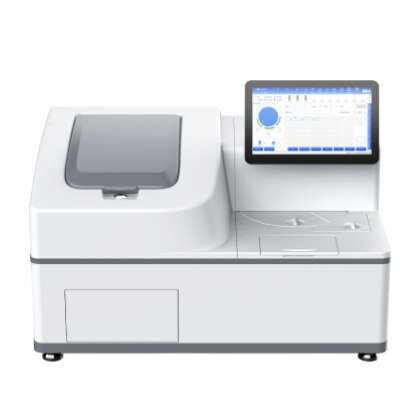Protein Identified That Maintains Embryonic Stem Cell Pluripotency
By LabMedica International staff writers
Posted on 06 Oct 2014
A protein that is critical in maintaining stem cells in their primitive pluripotentive state was identified and discussed in a recently published paper.Posted on 06 Oct 2014
Investigators at the New York University Langone Medical Center (NY, USA) had previously found that the protein BRD4 (bromodomain-containing protein 4) promoted the growth and spread of melanoma by keeping the cancer cells in a relatively immature, stem cell-like state.

Image: Following inhibition of a key protein, these embryonic stem cells underwent differentiation and lost their pluripotency. (Nuclei are in green and nuclei expressing pluripotency factors are in blue and red) (Photo courtesy of Dr. Raffaella Di Micco, New York University Langone Medical Center).
In the current study, published in the September 25, 2014, online edition of the journal Cell Reports, the investigators demonstrated in mouse and human embryonic stem cells (ESCs) that BRD4 regulated the capacity for self-renewal and pluripotency. When BRD4 was inhibited chemically or through the use of siRNA, this resulted in induction of epithelial-to-mesenchymal transition (EMT) markers and commitment to the maturation into neural cells while reducing the ESC multi-differentiation capacity in teratoma assays.
BRD4 maintained the transcription of core stem cell genes such as OCT4 and PRDM14 by occupying their super-enhancers (SEs), large clusters of regulatory elements, and recruiting to them Mediator and CDK9, the catalytic subunit of the positive transcription elongation factor b (P-TEFb), to allow Pol-II-dependent productive elongation.
"OCT4 is one of the four factors in the standard "OKSM" cocktail used for turning ordinary cells into induced pluripotent stem cells (iPSCs)," said senior author Dr. Eve Hernando-Monge, associate professor of pathology at the New York University Langone Medical Center. "The new findings suggest that BRD4 enforces stem cell identity from an even higher regulatory level in the cell. In theory we could replace one or more of those OKSM factors with BRD4, or add it to the cocktail to increase reprogramming efficiency—that is something we are working on now."
Related Links:
New York University Langone Medical Center













